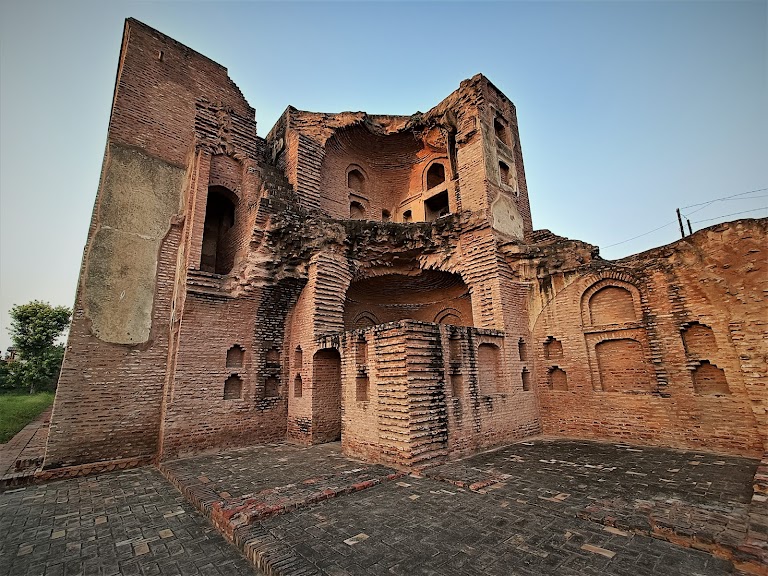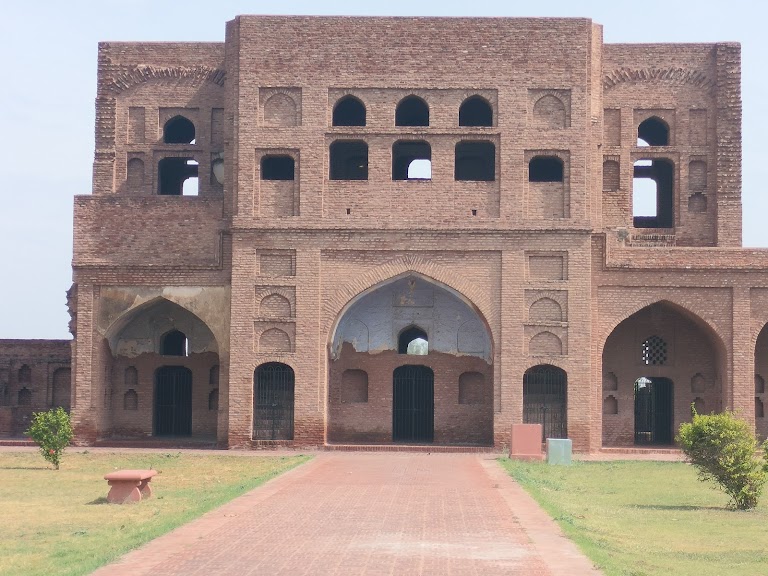.jpeg)
.jpeg)


In the charming town of Nurmahal, Jalandhar, stands the grand Sarai Nurmahal, a stunning symbol of Mughal imperial power and artistic grandeur. Constructed between 1605 and 1627 by Emperor Jahangir, this historical gem captures the essence of Mughal architecture, blending it seamlessly with the rich traditions of the Rajputs and the vibrant culture of Punjab. A jewel in Punjab’s architectural crown, Sarai Nurmahal is a masterpiece of oriental design. Its sprawling quadrangular layout, featuring 140 intricately crafted cells and towering gateways, transports visitors to a time when Mughal emperors reigned supreme and lavish sarais were built to welcome travelers, traders, and nobility alike. The beauty of the sarai lies in its harmonious blend of faith, culture, and the camaraderie between the Mughal rulers and the valiant Rajput kings, particularly the Kachchawahas of Punjab. A Monument of Grandeur and Mystery Named after the radiant Empress Nur Jahan, the wife of Jahangir, who is believed to have spent her early years here, Sarai Nurmahal is steeped in history and legend. During excavations, gold bricks and ancient coins were discovered, adding an air of mystery to the town. It is said that the ancient city of Nurmahal was mysteriously destroyed around the 1300s, though the reason remains unknown. A Harmony of Mughal and Hindu Architecture Sarai Nurmahal is not just a marvel of Mughal design; it is a symbol of unity between Mughal and Hindu architectural traditions. Built with meticulous attention to detail, the structure features open spaces adorned with graceful arched pavilions, resting on intricately carved pillars. These ornamental elements, rooted in Punjab’s architectural heritage, reflect the region’s enduring elegance. The fusion of Mughal and Hindu styles is a reminder of the cultural exchanges that shaped Punjab’s architectural landscape. Unlike the more defensive structures of the earlier Mughal era, Sarai Nurmahal features ornamental windows that overlook the streets and courtyards, allowing light to stream into the chambers while providing a glimpse of the world beyond. The delicate craftsmanship of these windows adds to the visual allure of the sarai, creating a balance between functionality and beauty. A Legacy of Artistic Excellence Crafted from red bricks and marble, Sarai Nurmahal showcases the refined aesthetic sensibilities of the Mughal emperors. The walls are adorned with intricate carvings, featuring both religious and historical motifs that tell the story of a bygone era. The use of fine art in this sarai is a tribute to the Mughal tradition of elevating architecture to an art form. Its small, evenly spaced windows act as embellishments, adding a sense of rhythm and harmony to the structure. Sarai Nurmahal’s artistic splendor, steeped in Mughal elegance and Punjabi tradition, continues to inspire awe among visitors. As you walk through its grand corridors, you’ll find yourself transported back in time, enveloped by the stories and grandeur of a glorious past. Sarai Nurmahal is not just a historical monument; it is a living testament to the grandeur of Mughal architecture and the enduring spirit of cultural harmony. Whether you're a history enthusiast, an architecture lover, or simply someone seeking to connect with Punjab’s rich heritage, Sarai Nurmahal offers an unparalleled journey through time. From its majestic gateways to its intricate carvings, every corner of this magnificent structure invites you to step into a world of beauty, culture, and timeless elegance.